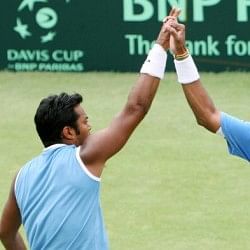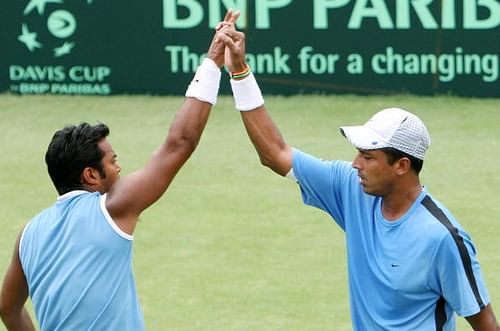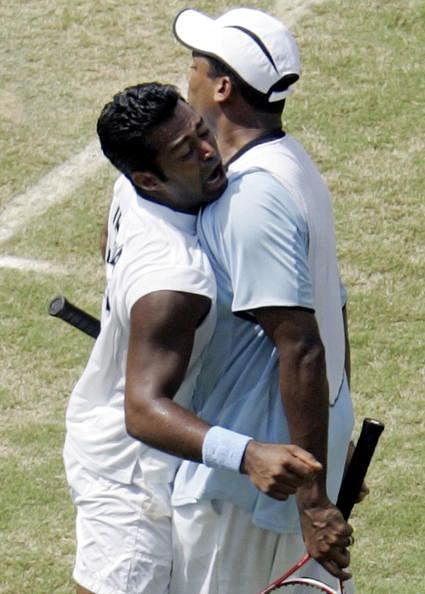
Paes-Bhupathi: The giants of Indian tennis
Like cricket, lawn tennis is another sport which is British empire’s gift to India. It is true that the game does not have the same following as cricket, but it has made significant progress over the last few years. It was not long ago that tennis was considered to be a sport of the elite class but the scene has undergone a tremendous change in recent times. The credit for this goes to two gentlemen who had made the doubles game their own in the late 90s – Leander Paes and Mahesh Bhupathi.

Youngsters, when they take to a game, need role models and nothing can beat the impact of having a hero from your homeland. Of the many reasons due to which cricket has prospered the way it has in the country, has been the constant emergence of superstars. The game of cricket would not have been the same in India without the Gavaskars and Tendulkars of the world. And this is where Indian tennis has been lagging. Although there have been sporadic instances of individual brilliances from the likes of Ramanathan Krishnan, Ramesh Krishnan (Ramanathan’s son) and Vijay Amritraj but these have been few and far in between. Ramanathan Krishnan even made it to the top three in the world ranking in the 60s but failed to win a Grand Slam.
The game of tennis in India got a lift when Leander Paes won the bronze medal in the Atlanta Olympics in 1996 (The fact that many top players had not participated in the games in which Andre Agassi finally won the Gold medal did not spoil the Indian celebrations). The Grand Slam jinx was then broken by Mahesh Bhupathi when he won the French Open mixed doubles with Rika Hiraki of Japan in 1997. The above two achievements were by no means small, especially for a nation like ours which has rarely excelled in sporting events at world stage (apart from a few sports). Thus, the image of Leander Paes with the Olympics medal in a tri-coloured t-shirt is still fresh in the minds of those who followed Indian sports in the 90s.
 Career best singles ATP ranking of 73 (for Paes) and 217 (for Bhupathi) may be nothing compared to the high rankings achieved by the Krishnans or Amritraj but in doubles, Paes and Bhupathi were more than a force to reckon with. Neither of them had the serve of a ‘Boom Boom Becker’ nor the class of a ‘Pistol Pete Sampras’ but they just had enough required to succeed in doubles. The duo reached their peak in 1999 when they won the French Open and Wimbledon Men’s Doubles, thus becoming the first Indian pair to win a Grand Slam.
Career best singles ATP ranking of 73 (for Paes) and 217 (for Bhupathi) may be nothing compared to the high rankings achieved by the Krishnans or Amritraj but in doubles, Paes and Bhupathi were more than a force to reckon with. Neither of them had the serve of a ‘Boom Boom Becker’ nor the class of a ‘Pistol Pete Sampras’ but they just had enough required to succeed in doubles. The duo reached their peak in 1999 when they won the French Open and Wimbledon Men’s Doubles, thus becoming the first Indian pair to win a Grand Slam.
These events of the late 90s gave an average Indian the belief that they could also do well in top tennis tournaments. It was during the same time that the Indian middle class was growing and tennis was no longer just the sport of the upper class. Many youngsters now started looking up to tennis as a career. That the country has still failed to produce top tennis talent, is a fact that we have to live up with and hope that it will soon change for the good. The critics also blame Paes-Bhupathi for their internal fight that eventually led to the breakup and the adverse effect that it had on Indian tennis. They might be correct in their own right but nothing can take away from the duo their contribution to Indian tennis. They continue to play with different partners till date and have been fairly successful with others also.
Speculation is a part and parcel of sports. “What if?” is a question that is asked very often in any sport and tennis is no exception. So, people will always speculate that what if Paes-Bhupathi had played together for a longer period of time? Would they have won more Grand Slams? Would they have brought more laurels to Indian tennis? We will never know the answer to these questions. What we know for sure is that they have been two people responsible for making the game of tennis popular in India over the past two decades.